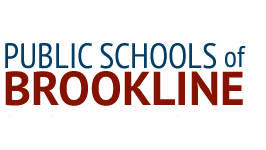Office of English Language Education
-
The Office of English Language Education (ELE) provides services to more than 750 students in grades PK-12 whose primary language is not English and who are not yet proficient in English. The program provides support at each school, with services focused on children’s English language acquisition, literacy development, and academic achievement.
Vision Statement
It is our vision that English learners understand, speak, read, and write English fluently and competently in order to succeed academically and socially in their classrooms, schools, and communities at large. Students will acquire the linguistic and cultural knowledge to function effectively globally.
Instructional Services
English language education develops English proficiency and supports academic content knowledge. Individual needs are respected and accommodated through the use of various instructional methods fostering high academic achievement. English learners are proportionately represented in all school programs and services. They become confident learners and are empowered through the development of critical thought, reflection, and action.
Professional Development
Classroom teachers and ELE specialists are prepared to work collaboratively to effectively educate English language learners. Classroom teachers are trained to provide quality sheltered English immersion (SEI) instruction. ELE specialists participate in professional learning that provides them with resources to enhance their instructional delivery of English. All teachers and specialists are able to make meaningful content connections and accurately assess students’ performance and educational profiles. They are qualified to and feel confident working with English language learners in their classrooms.
Cultural Values
ELE students are valued members of a community that embraces the exchange of cultural knowledge, encourages and supports the acquisition of language and appreciation of culture, and ensures that the cultural backgrounds of students are reflected within the curricula. ELE students develop a deeper understanding of both their own cultures and those of the diverse community. Students become increasingly active participants and share their perspectives in all educational and extracurricular settings.
Community Connections
The Public Schools of Brookline provides welcoming opportunities for active ELE family involvement, assures that all ELE students and their families have equal access to school and community resources and embodies the cultural identities of students and families in school environments.
What We Do
-
- Enrollment and Assessment
- Instructional Programs
- Family and Community Engagement
- Translation and Interpretation
- Professional Learning
- Accountability
Enrollment Data
-
Summary:
As of October 1, 2023:- The total English learner (EL) enrollment in grades K-12 remained unchanged – 780 students in 2023 compared with 780 students in 2022
- ELs represent 11.5% of the total district population
- 44 primary languages are represented in our EL population (53 in 2022)
- Approximately 38% of ELs, including kindergarten, are new to Brookline schools this year
- Following are our largest language groups (K-12): Japanese (163 students), Korean (99 students), Chinese (96 students), Hebrew (84 students), and Spanish (73 students)
- 278 students are enrolled in our K-8 Native Language Support Programs (Korean, Hebrew, Chinese, Japanese, Spanish, and Russian)
- Enrollment percentages of ELs at our schools are as follows:
- Lawrence - 20.7%
- Pierce - 14.7%
- Ruffin Ridley - 16.8%
- Lincoln - 19.0%
- Baker - 17.9%
- Driscoll - 10.2%
- Runkle - 10.8%
- Hayes - 7.8%
- Brookline High School - 3.1%
Location
-
Brookline Town Hall,
333 Washington Street
Brookline, MA, 02445
Our Team
-
Mindy Paulo
Director
mindy_paulo@psbma.org
617-264-6413
Victoria Ching
Administrative Assistant
victoria_ching@psbma.org
617-264-6412Marisa Palumbo
Enrollment and Assessment Specialist
marisa_palumbo@psbma.org
617-264-6431Betsy Davis
Family and Community Engagement (FACE) Coordinator
betsy_davis@psbma.org


